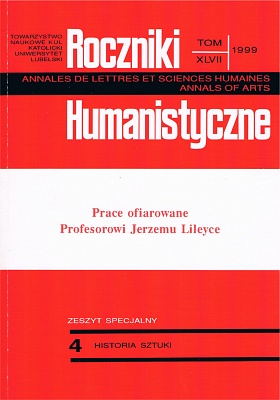The Question of Medieval Visual Narration. Chosen Research Attitudes
Abstract
In contemporary reflection on art the traditional, precise differentiation into art that has a temporal character (poetry, music) and spatial one (the arts) that goes back to ancient times and found an emphatic expression in G. E. Lessing's views, loses its position of an axiom. The interdisciplinary research that has been developing often cast a new light on the stereotypes formed in the past. One of them is the question of narration in the arts. As is well known, in his Laokoon Lessing denied the arts the ability to present actions that follow one another in time, admitting that they have the function of showing objects that exist one beside another in space. However, on the other hand, in fact there has always been the conviction that painting is able to illustrate a certain event or a story. It was at the basis of Gregory the Great's famous remark that for common people a picture is the same as writing for those who can read.
The question of visual narration already appeared in history of art when the variety of ways was noticed with which artists coming from different epochs or backgrounds dealt with the problem of presenting a sequence of events and the flow of time; however, research on this problem started thriving in the second half of our century. New research perspectives were first of all opened by the deep reflection concerning methodology of history of art, and more broadly – of humanities, that was undertaken then. On the ground of methodology the temporal and spatial arts were brought closer together again. Theoreticians and historians of art as well as linguists and literature specialists contributed to the process. The notions used in theory of literature in many cases proved useful in analysis of visual narration. Investigations by those researchers who assimilated methods and terminology worked out by structural analysis and semiotics that drew on it had a special significance for studies of narration in the arts. Contemporary hermeneutics also contributed a lot to the problem.
The present review of chosen research attitudes shows the variety and multitude of directions in which the contemporary reflection on the problem of visual narration goes, on the example of works concerning medieval art. Medieval painting supplies especially vast and interesting material for that kind of research. Not limited, like the later modern painting, by academic rules, it worked out a broad range of means serving visual narration in which the manner of narration corresponded to the character and function of the work.
Copyright (c) 1999 Roczniki Humanistyczne

This work is licensed under a Creative Commons Attribution-NonCommercial-NoDerivatives 4.0 International License.





